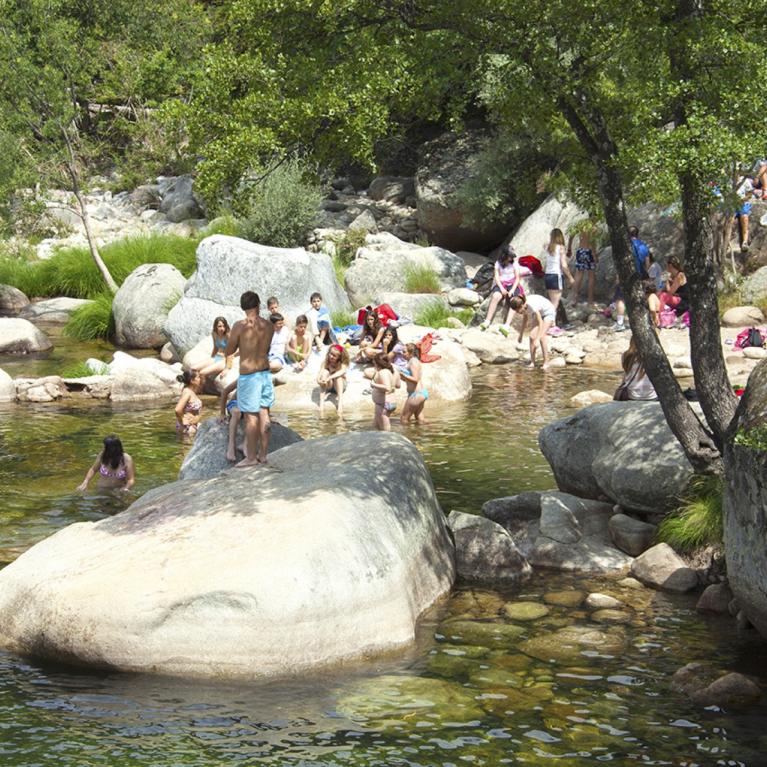
Jerte Valley
Jerte is a small municipality in the Jerte Valley, through which the river of the same name flows. The surroundings are perfect for rural tourism: hiking routes and natural swimming pools in the Garganta de los Infiernos nature reserve make this place a paradise for nature tourism.
Highlights
Garganta de los Infiernos
The "Garganta de los Infiernos" nature reserve is a protected space, and the most famous spot inside it is known as "Los Pilones": spectacular rock formations produced by the constant erosion of the water, used in summer as a natural bathing area.
Cerecera
At the start of the cherry season, an extensive programme of activities is held centred on this delicious fruit. Another interesting option is a visit to the Cherry Museum, which is 10 minutes from our hotel.
Adventure sports
Nature sports lovers can engage in activities like descending vertiginous ravines, challenging climbs, canoeing on the river Jerte or quiet walks in the Jerte Valley.
Natural swimming pools in the Jerte Valley
The Jerte Valley offers a multitude of bathing areas, in most cases prepared as natural swimming pools, for enjoying a refreshing dip in an idyllic setting.
Tourist viewing platforms
The Jerte Valley has some fantastic viewing platforms, affording the very best panoramic views: Mirador de la Memoria (El Torno), Puerto de Tornavacas or Mirador del Puerto de Honduras.
Nogaledas Waterfalls
To enjoy this lovely faterfalls, there is a 4-kilometre route with a low level of difficulty which enables you to contemplate the beauty of this lively watercourse and the ecosystem it supports.




























